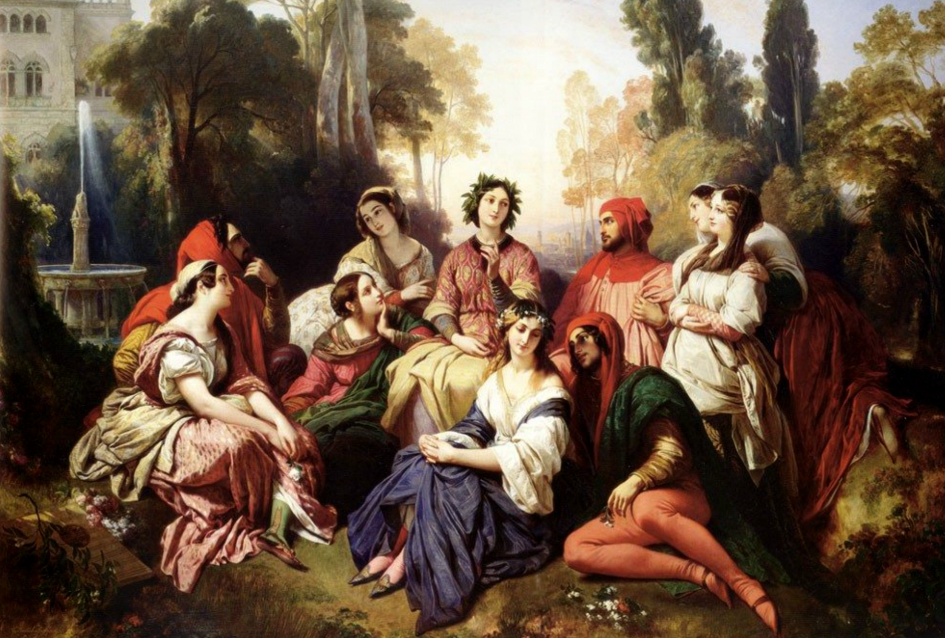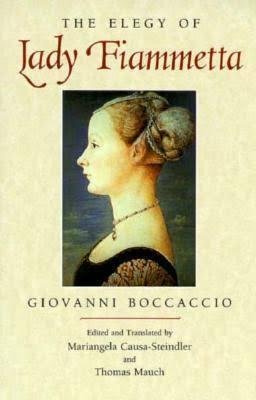"When Life Gives You Grave Robbers: A Tale of Medieval Mishaps"

Giovanni Boccaccio’s Decameron is a masterwork of medieval literature, offering a panoramic view of human nature through one hundred tales told over ten days. Among these stories, The Tale of Andreuccio da Perugia (Second Day, Fifth Story) stands out as a sharp and engaging narrative that combines humor, suspense, and moral insight. It is a story about deception, survival, and unexpected fortune, offering a vivid glimpse into the complexity of 14th-century urban life.
At its core, the tale follows Andreuccio, a young and inexperienced horse dealer from Perugia, who travels to Naples to conduct business. Almost immediately, his naivety places him in jeopardy. He is tricked by a cunning Sicilian woman who pretends to be his long-lost sister, only to steal his money and throw him out of her house once he is vulnerable. Penniless and embarrassed, Andreuccio stumbles through a series of misadventures, including an attempted robbery of a bishop’s tomb, betrayal by his supposed allies, and a narrow escape from near death. Ironically, by the end of the tale, he returns home not only unharmed but also richer than when he arrived — thanks to a valuable ring he finds in the bishop's tomb.
The plot is driven by an escalating series of challenges and betrayals, making it one of the more eventful and fast-paced tales in The Decameron. What begins as a simple journey to buy horses quickly unravels into a web of deceit, theft, and near-burial. Yet, Andreuccio’s fortune reverses through a mix of wit, courage, and luck — an archetypal structure that reflects Boccaccio’s nuanced understanding of how quickly fortune can shift.
Themes of deception, survival, and urban corruption dominate the tale. Naples, in this story, is no shining city but a place brimming with thieves, liars, and opportunists. It stands in stark contrast to the more innocent and honest Perugia that Andreuccio hails from. Boccaccio uses this setting to explore the tension between rural honesty and urban cunning, a theme deeply relevant in a time when cities were becoming hubs of commerce, social change, and moral ambiguity. The tale suggests that success in such an environment depends less on moral virtue and more on adaptability and shrewdness.
One of the tale’s most striking elements is its use of wit as a survival tool. While Andreuccio begins as a figure of ridicule — young, wealthy, and dangerously naive — his character arc is defined by growth. Faced with betrayal and mortal danger, he does not collapse. Instead, he learns quickly, hides cleverly in the tomb, and escapes with more than he bargained for. This development aligns with the broader thematic interest in wit that runs throughout The Decameron, where cleverness is often more rewarding than piety or honesty.
The tale’s supporting characters are equally compelling. The Sicilian woman embodies Boccaccio’s fascination with clever, morally ambiguous female figures. She uses her beauty, charm, and quick thinking to manipulate Andreuccio, highlighting both her agency and the dangers of unchecked trust. The grave robbers, meanwhile, serve as a reflection of the cutthroat environment that pervades Naples — alliances are fleeting, and betrayal is always a possibility.
Socially and historically, the tale is rich with subtext. It reflects the rise of the merchant class and the increasing importance of trade and travel in 14th-century Italy. Andreuccio’s profession as a horse trader places him among the growing ranks of itinerant professionals whose mobility exposed them to both economic opportunity and moral peril. The episode in the bishop’s tomb also hints at anti-clerical sentiment, subtly criticizing the Church’s wealth and portraying its tombs as ripe for looting. In doing so, Boccaccio aligns himself with a tradition of questioning religious authority and the moral legitimacy of its power and possessions.
Ultimately, The Tale of Andreuccio da Perugia is a masterfully told story that combines adventure, comedy, and sharp social commentary. It captures the chaos and unpredictability of life, especially in a world where virtue is often outmatched by cunning. Yet it does not descend into cynicism; instead, it suggests that resilience, quick thinking, and the ability to learn from experience are the true keys to success.
Through its vivid characters, tightly woven plot, and ironic tone, the tale exemplifies Boccaccio’s genius as a storyteller. It remains a standout tale not only for its entertainment value but also for its insight into human behavior and the complexities of life in a rapidly changing world.








